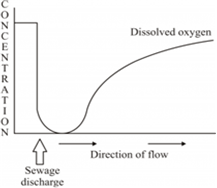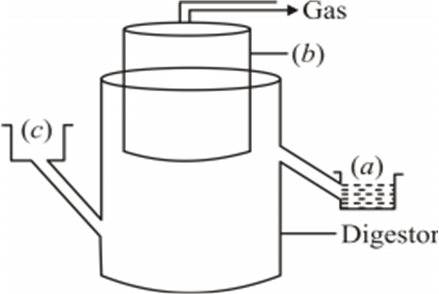 Short Answer Type
Short Answer TypeName the two different categories of microbes naturally occurring in sewage water. Explain their role in cleaning sewage water into usable water.
Study the graph given below. Explain how oxygen concentration is affected in the river when sewage is discharged into it.

The diagram above is that of a typical biogas plant. Explain the seQ uence of events occurring in a biogas plant. Identify a, b and c.
Streptococcus: produces streptokinase enzyme. This enzyme is used as a ‘Clot Buster’ that is used to dissolve and removes clots formed in the blood vessels of patients who have had a heart attack.
Monascus: produces statins that act as blood cholesterol lowering agents. They act by competitively inhibiting the enzyme responsible for the synthesis of cholesterol.
Name a free-living and a symbiotic bacterium that serve as bio-fertilizer. Why are they called so?
